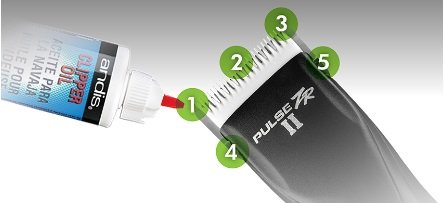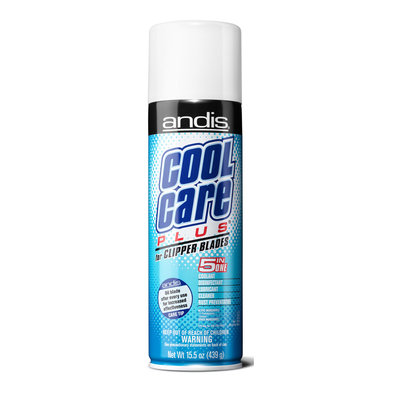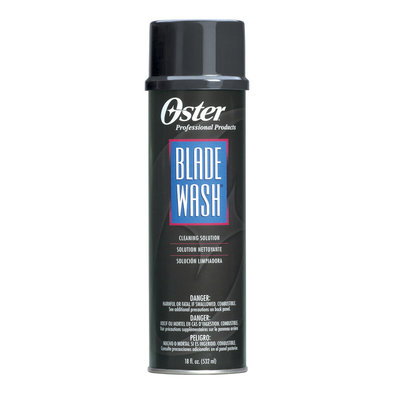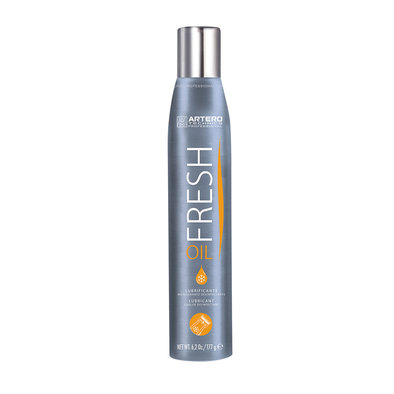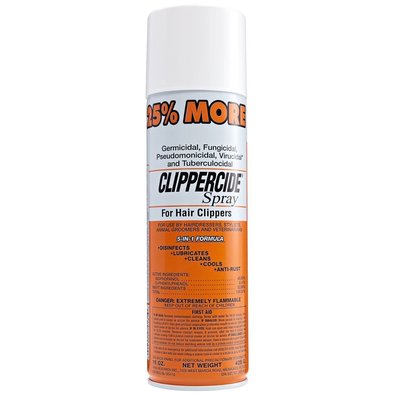Clipper & Blade Care
Keeping clippers and trimmers clean and well-oiled will help them run cooler, stay sharper longer and reduce wear and tear on the clipper’s motor and blade drive. Improper maintenance can lead to dull blades, sluggish performance and ultimately a shutdown of the tool itself.
Clipper Basic Cleaning:
• Turn off the tool. Clean out loose debris with a blade brush.
• Turn tool on. Use a blade care spray (Ex. Andis-Cool Care Plus, Oster- Blade Wash, Artero-Oil Fresh, Barbicide-Clippercide)
• Turn on the tool. Apply five drops of Blade Oil to the blade: 3 drops across the front teeth and one drop at each inside rear corner of the blade. Slightly tilt the clipper or trimmer to the side, allowing the oil to run off into a towel. Run the clipper for approximately 10 seconds. Turn off and wipe off any remaining oil.
Clipper Basic Cleaning:
• Turn off the tool. Clean out loose debris with a blade brush.
• Turn tool on. Use a blade care spray (Ex. Andis-Cool Care Plus, Oster- Blade Wash, Artero-Oil Fresh, Barbicide-Clippercide)
• Turn on the tool. Apply five drops of Blade Oil to the blade: 3 drops across the front teeth and one drop at each inside rear corner of the blade. Slightly tilt the clipper or trimmer to the side, allowing the oil to run off into a towel. Run the clipper for approximately 10 seconds. Turn off and wipe off any remaining oil.
Tips: If you continue to notice a decrease in performance after cleaning and oiling, it may be time to replace your blade, drive lever, hinges, and sharpen.
• Contact a credible independent sharpening service
• Check blade screws periodically
• Clipper vibration may loosen the screws
• DO NOT TAKE BLADES APART, by doing so, will void any warranty your product may have and you may not be able to return or exchange the blade
My blades are dragging and not cutting the hair, why?
Try cleaning excess hair clippings from blades and then oil. Disinfect blades according to label, with clipper running and blades pointed to the ground, drop oil at each corner and heel of the blade and let it run through. Gently blot with a soft cloth.
My blades are pulling and “chewing” the hair when cutting, why?
Blade alignment may be crooked. If the moving blade is not parallel with the fixed blade, the hair will not feed through evenly and will pull when cutting. If you have a 3-Hole blade, simply loosen (do not take apart) the center screw, and manually adjust the blades until parallel. If you have a 2-Hole blade, loosen the two screws, and manually adjust.
My clippers and trimmers are biting/pinching the skin, why?
One of three things is happening:
1. The moving blade is extended out past the fixed blade (overbite)
2. The cutting blade is being raked down on the skin, causing irritation
3. The user is heavy-handed and is pushing too hard, pushing the skin into the teeth
• Contact a credible independent sharpening service
• Check blade screws periodically
• Clipper vibration may loosen the screws
• DO NOT TAKE BLADES APART, by doing so, will void any warranty your product may have and you may not be able to return or exchange the blade
Troubleshoot
Try cleaning excess hair clippings from blades and then oil. Disinfect blades according to label, with clipper running and blades pointed to the ground, drop oil at each corner and heel of the blade and let it run through. Gently blot with a soft cloth.
My blades are pulling and “chewing” the hair when cutting, why?
Blade alignment may be crooked. If the moving blade is not parallel with the fixed blade, the hair will not feed through evenly and will pull when cutting. If you have a 3-Hole blade, simply loosen (do not take apart) the center screw, and manually adjust the blades until parallel. If you have a 2-Hole blade, loosen the two screws, and manually adjust.
My clippers and trimmers are biting/pinching the skin, why?
One of three things is happening:
1. The moving blade is extended out past the fixed blade (overbite)
2. The cutting blade is being raked down on the skin, causing irritation
3. The user is heavy-handed and is pushing too hard, pushing the skin into the teeth

